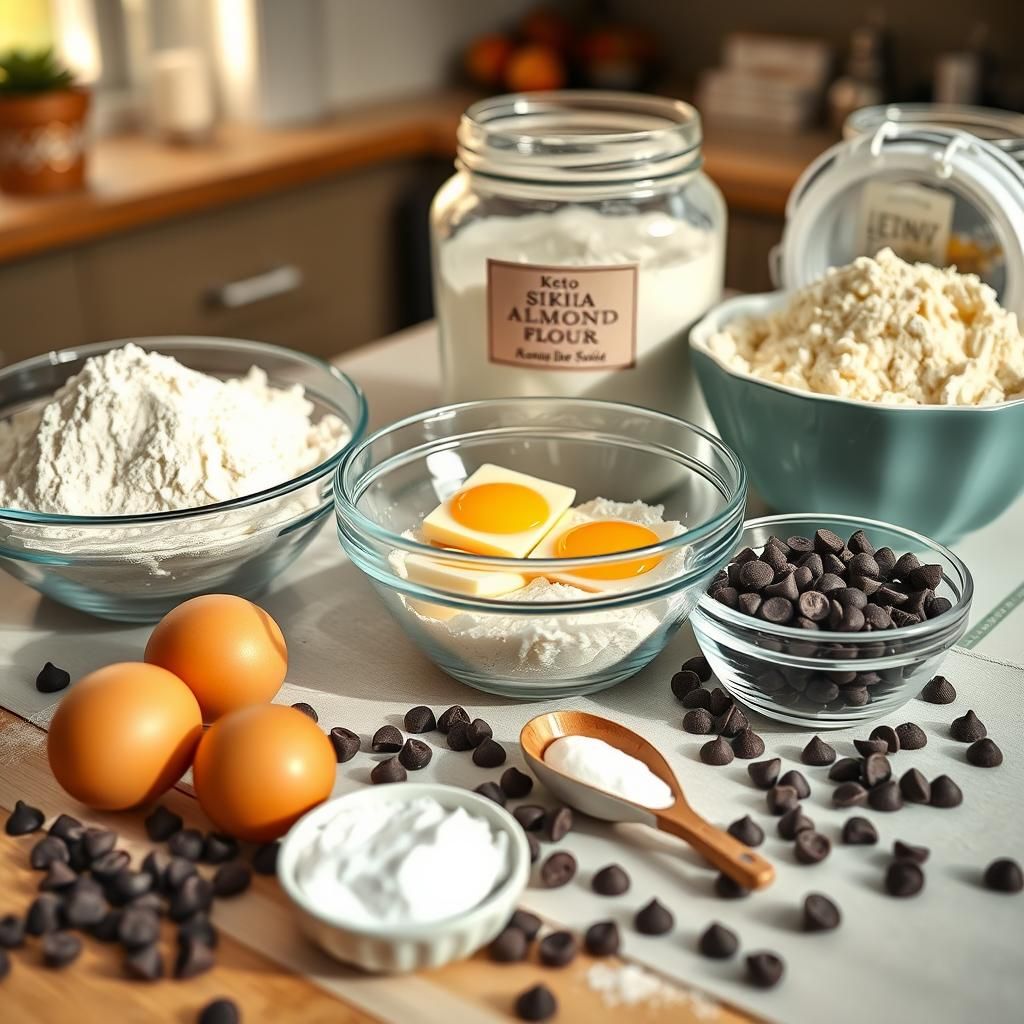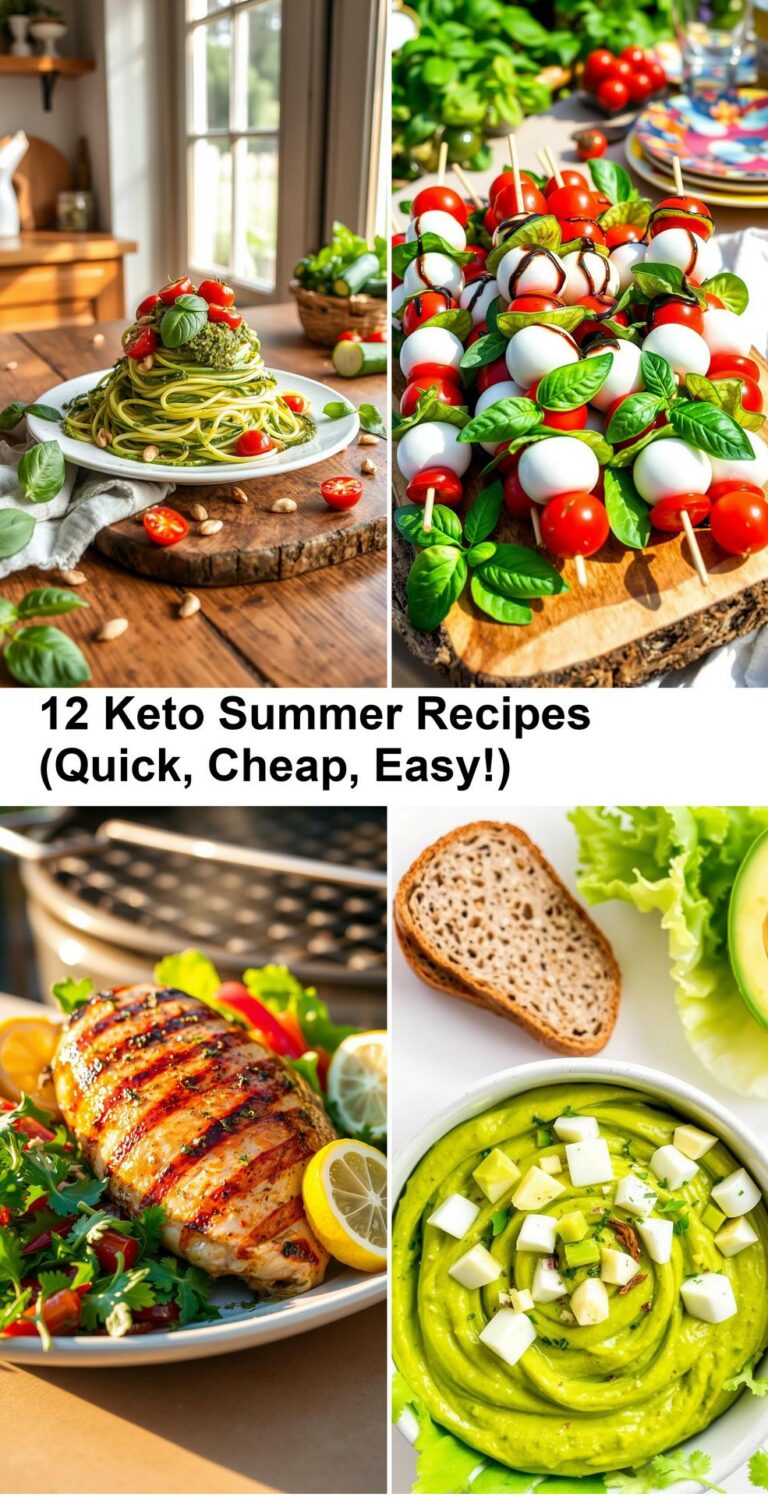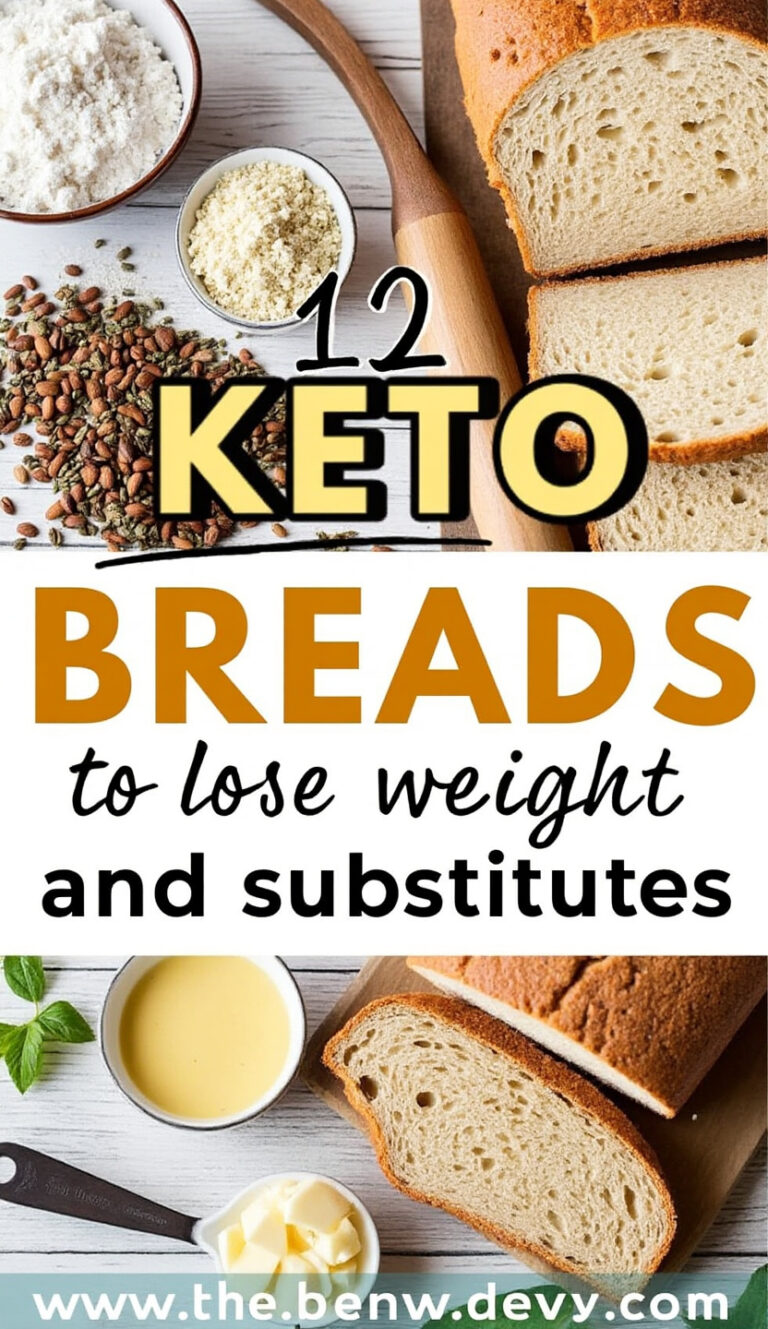Thick & Chewy Keto Chocolate Chip Cookies
The quest for the perfect chocolate chip cookie is a culinary journey many undertake. For those following a ketogenic lifestyle, this journey presents a unique set of challenges. How do you recreate that beloved, soft-on-the-inside, slightly-crisp-on-the-edges, undeniably chewy cookie without the foundational ingredients of traditional baking: sugar and wheat flour? It feels like chasing a low-carb unicorn.
Many keto cookie recipes result in flat, crumbly, or cakey textures that simply don’t hit the mark. The magic lies in understanding the science behind cookie texture and cleverly substituting ingredients while maintaining structural integrity and that crucial chew factor. This isn’t just about making a “keto cookie”; it’s about crafting a thick and chewy keto chocolate chip cookie that rivals its conventional counterpart in satisfaction, if not identical chemical composition.
Achieving this specific texture requires more than just swapping almond flour for wheat flour and erythritol for sugar. It involves a deeper dive into the properties of keto-friendly ingredients, strategic mixing techniques, temperature control, and a touch of baking intuition honed through trial and error. In this comprehensive guide, we’ll break down the science, demystify the ingredients, and provide a tried-and-true recipe designed specifically to deliver on the promise of thick, chewy, sugar-free, low-carb chocolate chip cookies.
Why Traditional Cookies Are a Keto Challenge
Before we build our keto masterpiece, let’s understand what makes traditional chocolate chip cookies thick and chewy, and why those components are problematic for a keto diet:
1. All-Purpose Flour: Contains gluten, a protein network that provides structure and elasticity. When combined with liquid and mixed, gluten develops, giving cookies shape and preventing excessive spread. It also absorbs moisture, contributing to chewiness. Keto flours (like almond and coconut) are gluten-free and behave very differently.
2. Granulated Sugar: Provides sweetness, obviously, but also plays a vital structural role. It caramelizes during baking, contributing to browning and flavor. It helps spread by melting. Crucially for chewiness, sugar is hygroscopic, meaning it attracts and retains moisture, keeping cookies soft and chewy over time. Keto sweeteners behave differently under heat and in moisture retention.
3. Brown Sugar: The MVP of chewiness in traditional cookies. Brown sugar is granulated sugar with molasses added. The molasses contributes flavor, color, and, most importantly, moisture. This extra moisture is key to that pliable, chewy texture. Replicating this moisture and flavor in a keto way is tricky.
4. Baking Soda & Baking Powder: Leavening agents that create gas, causing cookies to rise slightly. The balance between these and the acidity in the dough (often from brown sugar or cream of tartar) affects spread and lift. Achieving the right leavening with keto ingredients is vital for thickness.
Without gluten, sugar’s caramelization, and brown sugar’s molasses moisture, keto cookies face uphill battles against:
- Excessive Spreading: Lack of gluten structure and different sugar melting points can cause cookies to spread too thin.
- Crumbly Texture: Keto flours, especially almond flour, lack gluten’s binding power, leading to fragile cookies.
- Cakey Texture: Sometimes keto flours absorb liquid differently, or the leavening isn’t balanced, resulting in a muffin-top-like, cakey consistency instead of dense chewiness.
- Dryness: Without sugar retaining moisture, cookies can dry out quickly.
Our mission, therefore, is to find keto-friendly substitutes and techniques that mimic the functional properties of traditional ingredients, specifically focusing on achieving limited spread and excellent moisture retention for that desired thick and chewy result.
Mastering Keto Ingredients for Texture
Success in keto baking, especially for a specific texture like “thick and chewy,” hinges on a deep understanding of your ingredients.
Keto Flours: Almond vs. Coconut (and Blends)
These are the primary flour substitutes, but they are not interchangeable.
- Almond Flour: Made from ground almonds (blanched or unblanched). It’s relatively low in carbs and provides a good base.
- Pros for Cookies: Provides some structure (though no gluten), nutty flavor, absorbs fat well.
- Cons for Cookies: Lacks gluten, can make baked goods crumbly if not enough binder is used. Can spread a lot if not balanced. Different grinds (fine vs. coarse) affect texture. Use superfine blanched almond flour for the best results in cookies.
- Coconut Flour: Made from dried, defatted coconut meat. Much higher in fiber than almond flour.
- Pros for Cookies: Very absorbent, helps create structure (due to high fiber). A little goes a long way.
- Cons for Cookies: Extremely absorbent, requires significantly more liquid/fat than almond flour. Has a distinct coconut flavor which may or may not be desired. Can result in a dry, crumbly, or cakey texture if not used correctly (often needs more eggs). You typically use about 1/4 to 1/3 the amount of coconut flour compared to almond flour in a recipe.
For many looking into a low-carb lifestyle beyond just baking, exploring a Custom Keto Diet can provide a tailored approach to their nutritional needs.
- Why a Blend Might Work: Combining almond and coconut flour can leverage the strengths of both. Almond flour provides richness and bulk, while a smaller amount of coconut flour helps absorb excess moisture and provides structure through fiber, potentially reducing spread and improving chewiness. Many successful keto cookie recipes utilize a specific ratio of these two flours.
Sugar Substitutes: Finding the Right Sweetness & Texture
This is arguably the most complex substitution in keto baking, as different sweeteners have varying impacts on flavor, texture, and how they behave when heated.
- Erythritol: A sugar alcohol. About 70% as sweet as sugar. Does not impact blood sugar significantly.
- Pros for Cookies: Easy to find, browns slightly, provides bulk like sugar.
- Cons for Cookies: Can have a cooling aftertaste, especially in larger amounts. Does not caramelize like sugar. Can recrystallize (“gritty” texture) upon cooling, particularly problematic for chewiness. Using powdered erythritol or a blend can mitigate grittiness.
- Swerve (Erythritol Blend): Often a blend of erythritol, oligosaccharides, and natural flavors. Tastes closer to sugar for some.
- Pros for Cookies: Measures cup-for-cup with sugar, less cooling effect for many people. Behaves similarly to erythritol.
- Cons for Cookies: Can still have a slight aftertaste for some. Can potentially recrystallize.
- Monk Fruit Sweetener: Often blended with erythritol or allulose as it’s much sweeter than sugar on its own.
- Pros for Cookies: Very sweet, minimal to no impact on blood sugar. Doesn’t typically have the same strong cooling effect as pure erythritol. Blends offer bulk.
- Cons for Cookies: Pure extract is potent and needs bulking agents. Blends vary wildly in composition and performance. Can still contribute to erythritol’s texture issues if that’s the base.
- Allulose: A “rare sugar” that behaves much more like sugar than sugar alcohols.
- Pros for Cookies: Browns and caramelizes better than erythritol. Does not have a cooling effect. Less likely to recrystallize, leading to a smoother, chewier texture.
- Cons for Cookies: Can be more expensive and harder to find. Some people report digestive issues with large amounts. Slightly less sweet than sugar (about 70%).
Planning your meals effectively is crucial on keto. Consider exploring The Ultimate Keto Meal Plan for comprehensive guidance.
- The Key for Chewiness: Sweeteners like allulose or blends heavy in allulose (or using powdered versions of others) are generally preferred for chewiness because they are less likely to recrystallize and can help with browning and moisture retention more effectively than pure granular erythritol. Using a brown sugar substitute (usually erythritol/monk fruit blended with a touch of molasses extract or maple extract for color/flavor) can mimic brown sugar’s role somewhat, though it won’t replicate the exact moisture content.
Fats and Binders: The Foundation of Chewiness
- Butter: Creamed butter is essential for texture. It creates air pockets when creamed with the sweetener, which contributes to lift and tenderness. Butter’s fat content also limits gluten development (not an issue here, but good to know!) and carries flavor. Using softened, but not melted, butter is key. Melting butter leads to flatter, crispier cookies.
- Eggs: Act as binders, holding the keto flours together. They also add moisture and richness. Often, adding an extra egg yolk can increase richness and contribute to a denser, chewier texture, similar to how brown sugar adds moisture. The protein in the egg helps with structure.
- Xanthan Gum: A crucial binder in gluten-free and keto baking. It mimics some of gluten’s properties, providing elasticity and preventing crumbling. It also helps thicken doughs and batters and limits spread. Even a small amount (1/4 to 1/2 teaspoon per cup of flour) can make a significant difference in keto cookies, transforming them from crumbly to delightfully chewy. It’s highly recommended for achieving a thick, chewy texture.
Leavening and Texture Control
- Baking Soda: Typically reacts with an acid (like brown sugar’s molasses or cream of tartar). Creates spread and some lift.
- Baking Powder: A complete leavening agent (acid and base). Provides lift upwards.
The ratio of baking soda to baking powder, or using one without the other, affects how much your cookies spread vs. puff up. For a thick cookie, you want limited spread and more upward puff. This usually means using a balanced leavener or perhaps relying slightly more on techniques that prevent spread (like chilling, discussed below) than on leavening for height. However, some lift is needed to avoid a hockey puck!
If you’re interested in mastering more keto baking, you might find the Keto Breads and Pizza recipe book a valuable resource.
The Chocolate Dilemma: Finding Sugar-Free Chips
Standard chocolate chips are loaded with sugar. Thankfully, many sugar-free or low-carb options exist.
- Brands: Lily’s, ChocZero, Pascha (dark, often lower sugar but check carbs), Kirkland (Costco), Santa Barbara Chocolate, Bake Believe.
- Composition: Most use erythritol, stevia, or monk fruit blends as sweeteners. Some use allulose.
- Melting: Be aware that chips made with erythritol/stevia may not melt as smoothly or pool as nicely as sugar-sweetened chocolate. Allulose-sweetened chips tend to melt better. Choose a brand you like the taste and texture of. Dark chocolate (like 85-90% cacao) is another option, lower in sugar but still contains some carbs – count carefully if using. Chop up a bar for irregular melty chunks.
The Science Behind Thick & Chewy Texture
Beyond just ingredients, how you handle them and how you bake them is paramount to achieving a thick and chewy result in keto cookies.
1. The Role of Ingredient Ratios:
- More Fat Relative to Flour: A higher fat content contributes to tenderness and helps carry flavor. It also interferes slightly with protein development in the eggs/flour, leading to a softer crumb.
- Less Liquid: Excess liquid can cause spread and a cakey texture. Keto recipes often use slightly less liquid than traditional ones, relying on the fat and eggs for moisture.
- Balanced Sweetener: Too much sweetener can make cookies too hard or contribute to overwhelming cooling effects/grittiness.
- Crucial Binders: Enough egg and, importantly, xanthan gum are vital to prevent the cookie from collapsing and spreading into a thin wafer.
Understanding the keto diet more broadly can be helpful. Check out The Keto Diet for a comprehensive guide.
2. Mixing Techniques for Optimal Texture:
- Creaming Butter and Sweetener: Beat softened butter with your chosen powdered keto sweetener(s) until light and fluffy. This incorporates air, which helps with lift and creates a tender structure. Don’t rush this step – it can take 3-5 minutes with an electric mixer. Using powdered sweetener helps prevent grittiness from sugar alcohols.
- Adding Eggs (and Yolks): Beat in eggs one at a time, mixing until fully incorporated after each addition. Adding an extra egg yolk adds fat and moisture, promoting chewiness.
- Adding Dry Ingredients: Mix the dry ingredients (flour(s), leavening, salt, xanthan gum) in a separate bowl first to ensure even distribution. Add to the wet ingredients and mix just until combined. Do not overmix keto dough. Overmixing can develop toughness (even without gluten, you can get tough results) and change how the flours hydrate, potentially leading to dryness or cakiness.
3. The Magic of Chilling Cookie Dough:
This is arguably the most critical step for achieving thick cookies, keto or not, but it’s especially important with gluten-free doughs that lack structural integrity.
- Why Chill?
- Solidifies Fat: Cold butter melts slower in the oven. Slower melting fat means less spread before the cookie’s structure sets.
- Hydrates Flours: Gives the keto flours time to absorb the moisture evenly. This leads to a more uniform texture and prevents dry spots.
- Concentrates Flavors: Flavors meld and deepen as the dough rests.
- Stiffens Dough: Makes the dough easier to handle and shape into thicker mounds, which are less likely to spread thin.
- How Long? A minimum of 30-60 minutes is good, but chilling for several hours or even 24-48 hours yields the best results for thickness and flavor. You can chill the dough as a whole or scoop balls onto a baking sheet and then chill them.
Looking for more snack ideas? A Keto Snack Cookbook could provide inspiration.
4. Baking for Thickness, Not Spread:
- Oven Temperature: A slightly higher initial temperature (e.g., 350°F / 175°C) can help set the edges quickly, limiting spread, before the inside finishes baking at a slightly lower effective temperature. Ensure your oven thermostat is accurate!
- Placement on Baking Sheet: Don’t crowd the cookies. Give them space (at least 2 inches) to bake evenly.
- Baking Time: Bake just until the edges are set and lightly golden, but the center still looks slightly underbaked or soft. The cookies will continue to cook and set on the hot baking sheet after they come out of the oven. Overbaking is the enemy of chewiness; it leads to hard, dry cookies.
- The “Cookie Scoop” Method: Using a cookie scoop creates uniform balls of dough. For extra thickness, you can make the balls taller rather than perfectly round, or even stack two smaller dough balls.
- Dimpling (Optional but helpful): Some bakers gently press down on the center of the cookies immediately after removing them from the oven. This encourages the edges to set further and creates a slight indentation, which some feel contributes to a chewier center as it cools.
5. Secret Weapons: Xanthan Gum, Butter, and Eggs
We’ve touched on these, but they deserve emphasis as the primary tools for replicating traditional cookie structure and moisture:
- Xanthan Gum: Your gluten replacement for binding. Don’t skip it if you want true chewiness.
- Softened Butter: The foundation of structure and spread control through proper creaming and chilling. Use real butter for best results.
- Extra Egg Yolk: A simple addition that significantly boosts richness and helps achieve that dense, pliable chew.
By understanding these principles and the role of each ingredient, you’re well-equipped to make informed choices and adjustments when tackling keto cookie recipes.
Crafting Your Ultimate Thick & Chewy Keto Cookie Recipe
Based on the science and ingredient knowledge, here is a recipe designed specifically to maximize thickness and chewiness within keto parameters. This recipe uses a blend of almond flour and a touch of coconut flour, powdered sweetener, and xanthan gum, combined with crucial techniques like chilling.
Yields: Approx. 12-15 cookies
Prep time: 15 minutes + chilling time (at least 1 hour, ideally 2-24 hours)
Bake time: 10-14 minutes
Ingredients List:
Here are the ingredients you’ll need to gather for these perfect keto chocolate chip cookies.
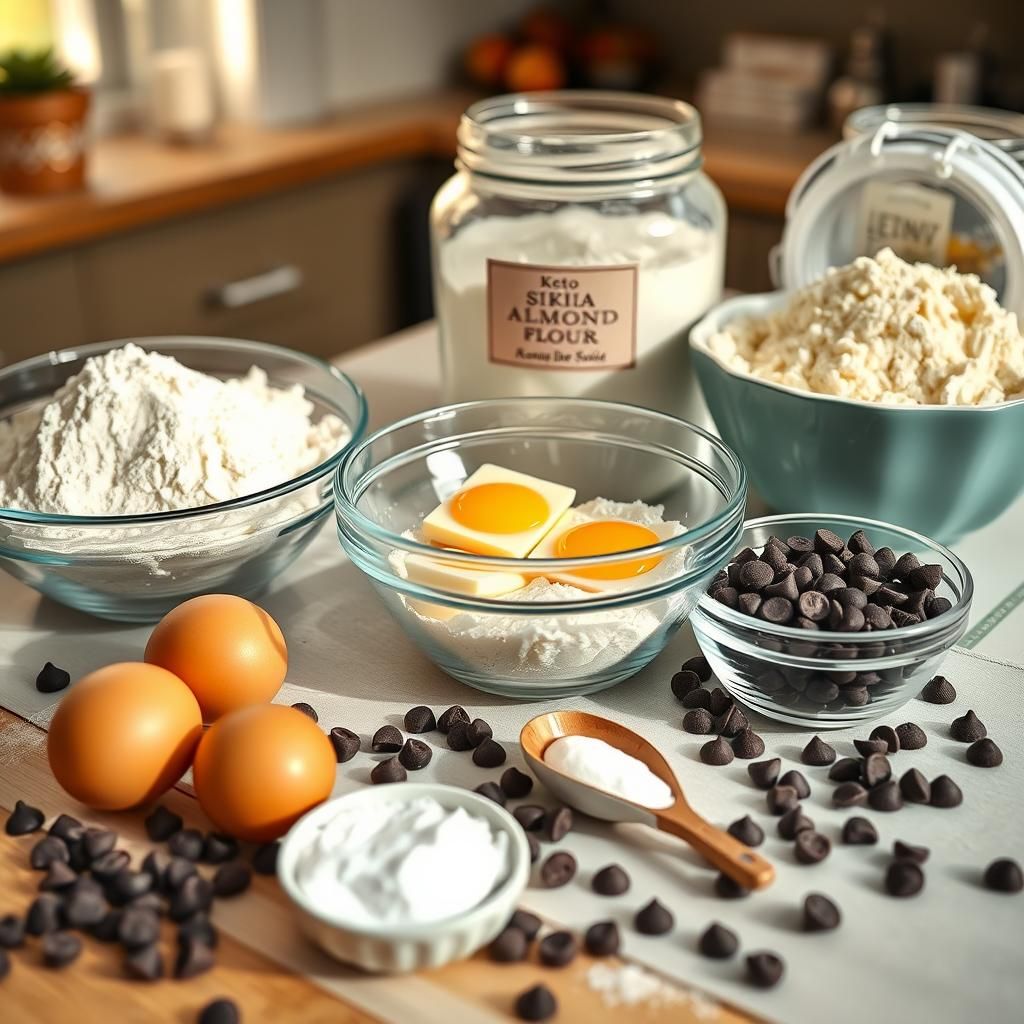
- 1/2 cup (1 stick) unsalted butter, softened (not melted)
- 3/4 cup powdered erythritol or preferred powdered keto sweetener blend (like powdered Swerve or a powdered monk fruit/erythritol blend). Using powdered is crucial to avoid grittiness.
- 1/4 cup powdered brown sugar substitute (optional, but adds flavor and moisture hint – use a blend like Lakanto Monk Fruit Golden or Swerve Brown)
- 1 large egg, room temperature
- 1 large egg yolk, room temperature
- 1 teaspoon vanilla extract
- 1 and 1/2 cups superfine blanched almond flour
- 2 tablespoons coconut flour
- 1/2 teaspoon xanthan gum (Do NOT skip for chewiness!)
- 1/2 teaspoon baking soda
- 1/4 teaspoon sea salt
- 3/4 cup sugar-free chocolate chips or chopped sugar-free chocolate bar
Step-by-Step Instructions:
1. Prep Your Ingredients: Ensure butter and eggs are at room temperature. If using granulated keto sweetener, process it in a blender or food processor until it’s a fine powder before measuring. Chop your sugar-free chocolate bar if using. Line a baking sheet with parchment paper or a silicone baking mat.
2. Cream Butter and Sweeteners: In a large bowl, using an electric mixer (hand or stand), beat the softened butter with the powdered erythritol (and brown sugar substitute, if using) on medium-high speed until light and fluffy. Scrape down the sides of the bowl as needed. This should take 3-5 minutes. This step incorporates air, which is key for texture.
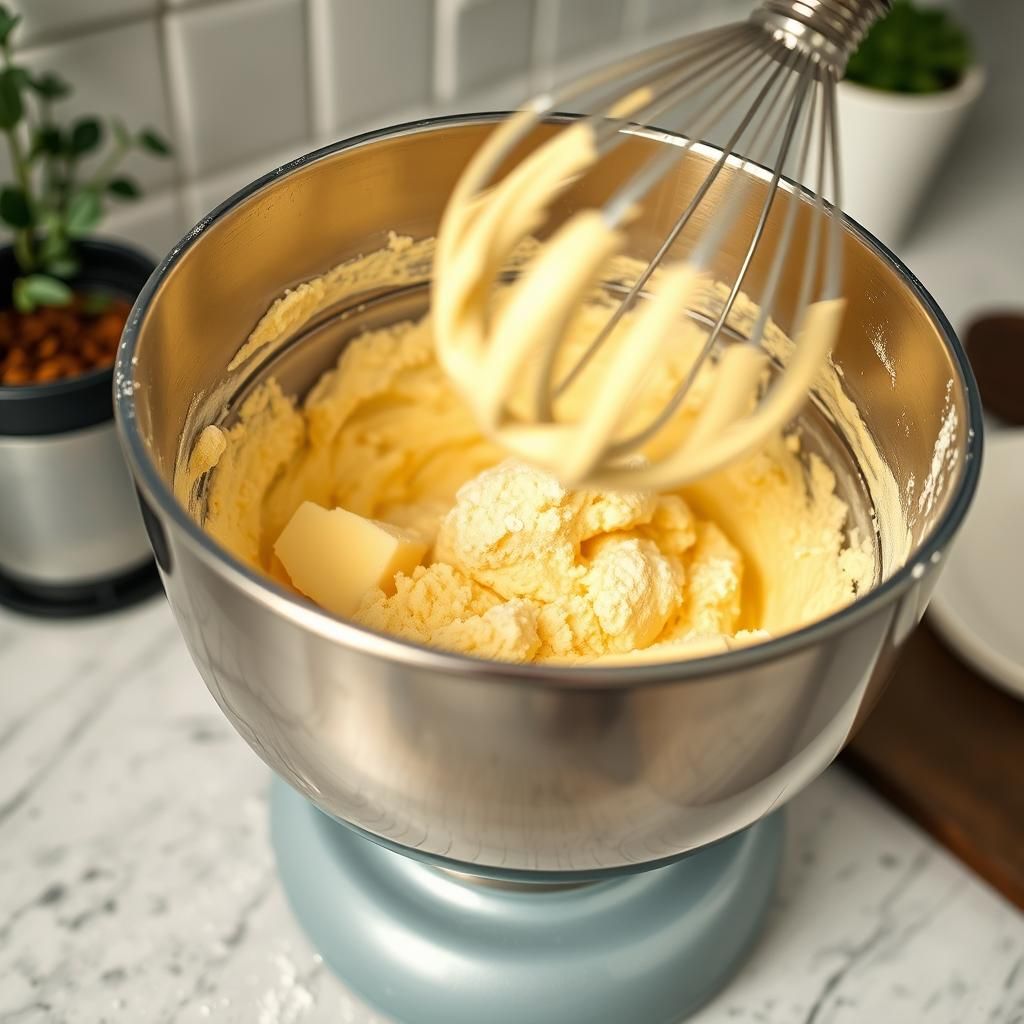
3. Add Eggs and Vanilla: Beat in the whole egg and then the extra egg yolk, mixing well after each addition until fully incorporated. Stir in the vanilla extract. The mixture may look slightly curdled; this is okay.
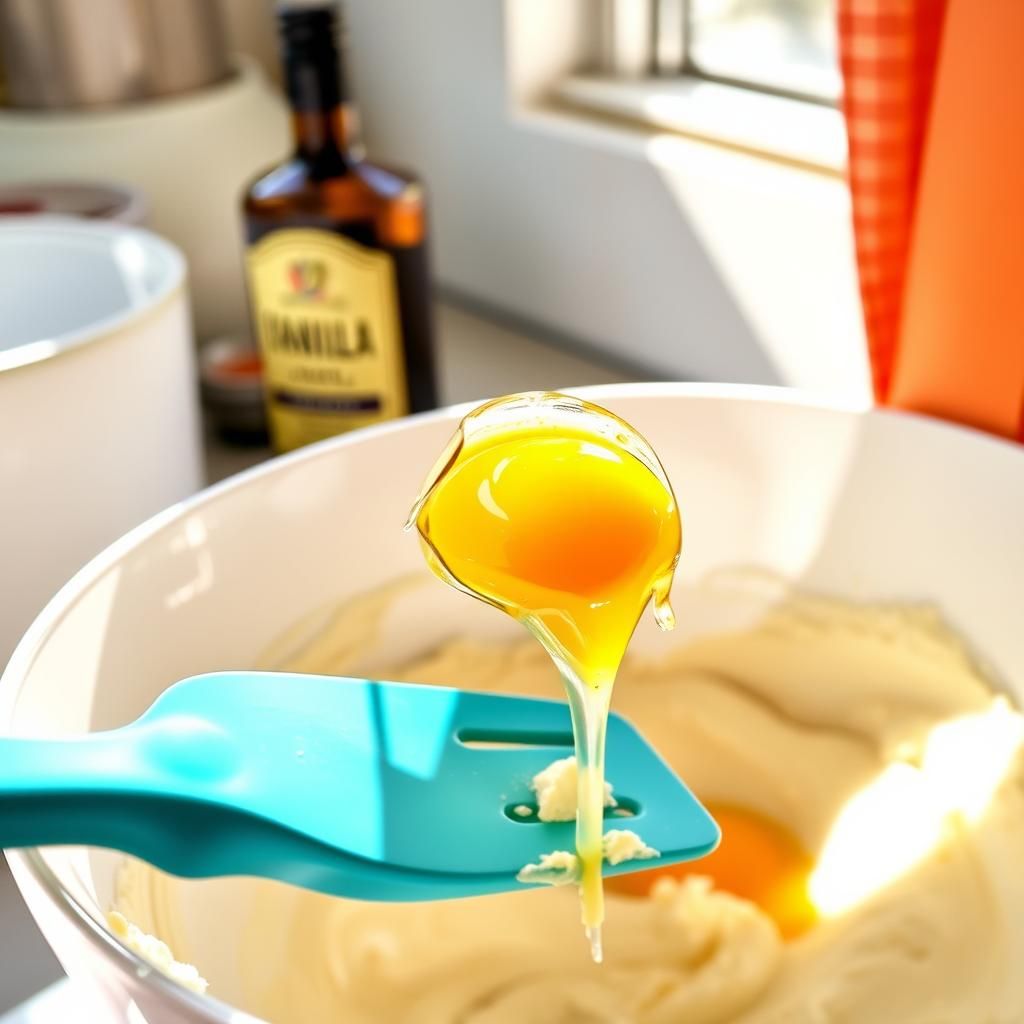
4. Combine Dry Ingredients: In a separate medium bowl, whisk together the almond flour, coconut flour, xanthan gum, baking soda, and sea salt. Whisk thoroughly to ensure the leavening and xanthan gum are evenly distributed.

5. Combine Wet and Dry: Gradually add the dry ingredients to the wet ingredients, mixing on low speed just until combined. Do not overmix. Stop as soon as you see no dry flour streaks.
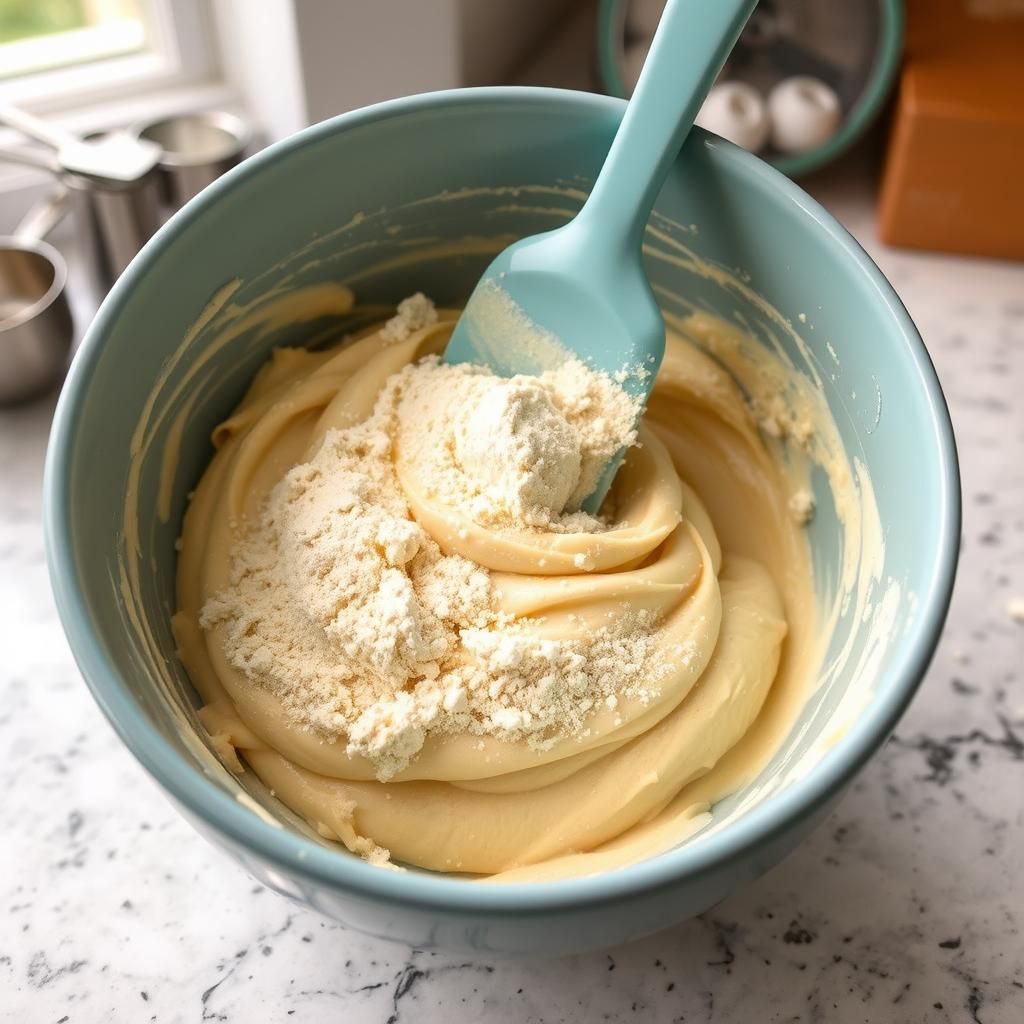
6. Fold in Chocolate Chips: Gently fold in the sugar-free chocolate chips using a spatula or wooden spoon.
7. Chill the Dough (CRUCIAL Step): This is vital for thick, chewy cookies. You have two options:
- Option A (Best for Thickness): Scoop the dough into desired cookie ball sizes (a 1.5-2 tablespoon cookie scoop works well). Place the balls on the prepared baking sheet or a plate. Flatten the tops very slightly if you want, but keep them mostly tall mounds. Cover and chill in the refrigerator for at least 1 hour, ideally 2-24 hours. The longer, the better for texture and flavor.
- Option B (Faster): Cover the bowl of dough tightly with plastic wrap and chill for at least 1 hour. Scoop later. This is okay, but chilling already-scooped balls results in less spread.
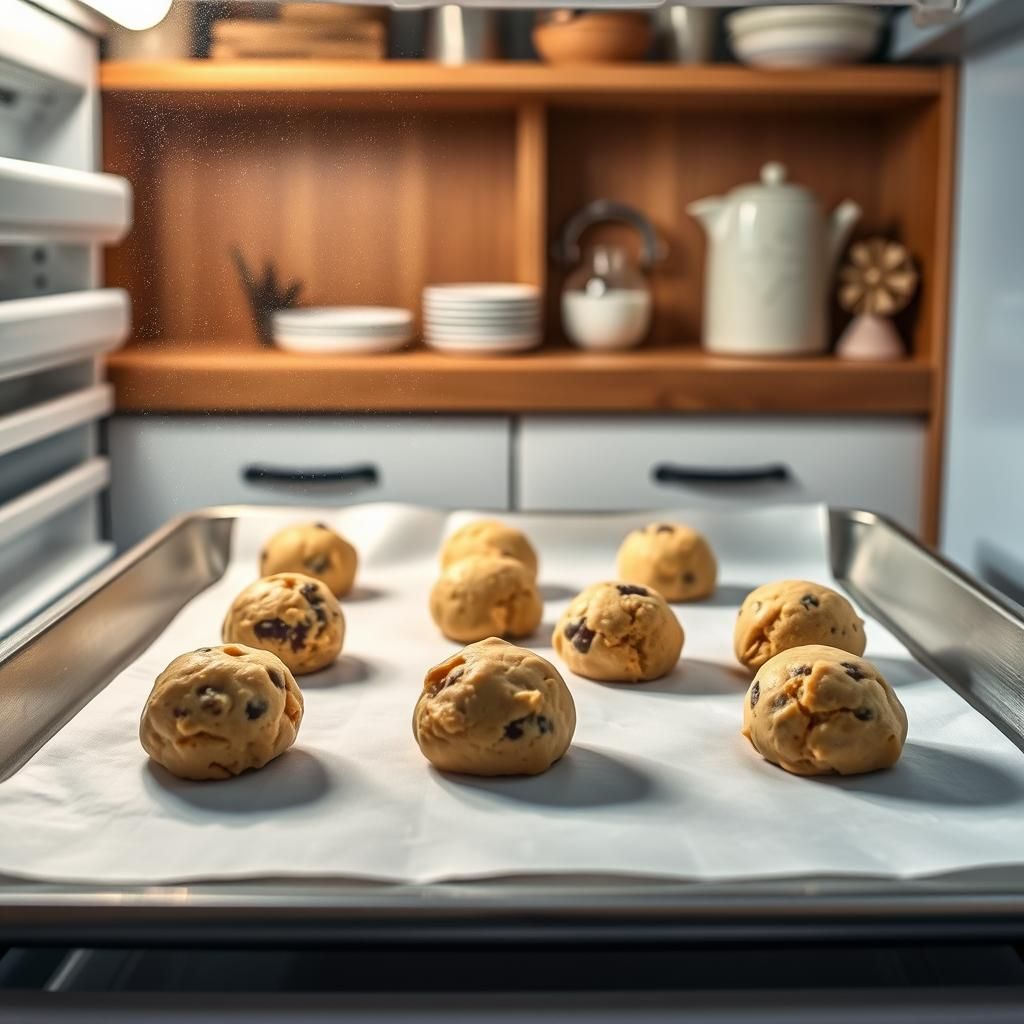
Getting started with a 30 DAY KETO MEAL PLAN can help structure your initial days on the diet.
8. Preheat Oven: When you’re ready to bake, preheat your oven to 350°F (175°C). If using a regular aluminum baking sheet, place it in the freezer or fridge for 10 minutes before putting the cold cookie dough balls on it (this helps prevent premature spread). If using a stoneware or dark pan, adjust temperature or time as needed.
9. Place on Baking Sheet: Arrange the chilled cookie dough balls on the prepared baking sheet, leaving about 2 inches between them. Do not bake on a warm sheet.
10. Bake: Bake for 10-14 minutes, or until the edges are set and lightly golden, and the centers still look slightly soft or underbaked. The exact time will depend on your oven and the size of your cookies.
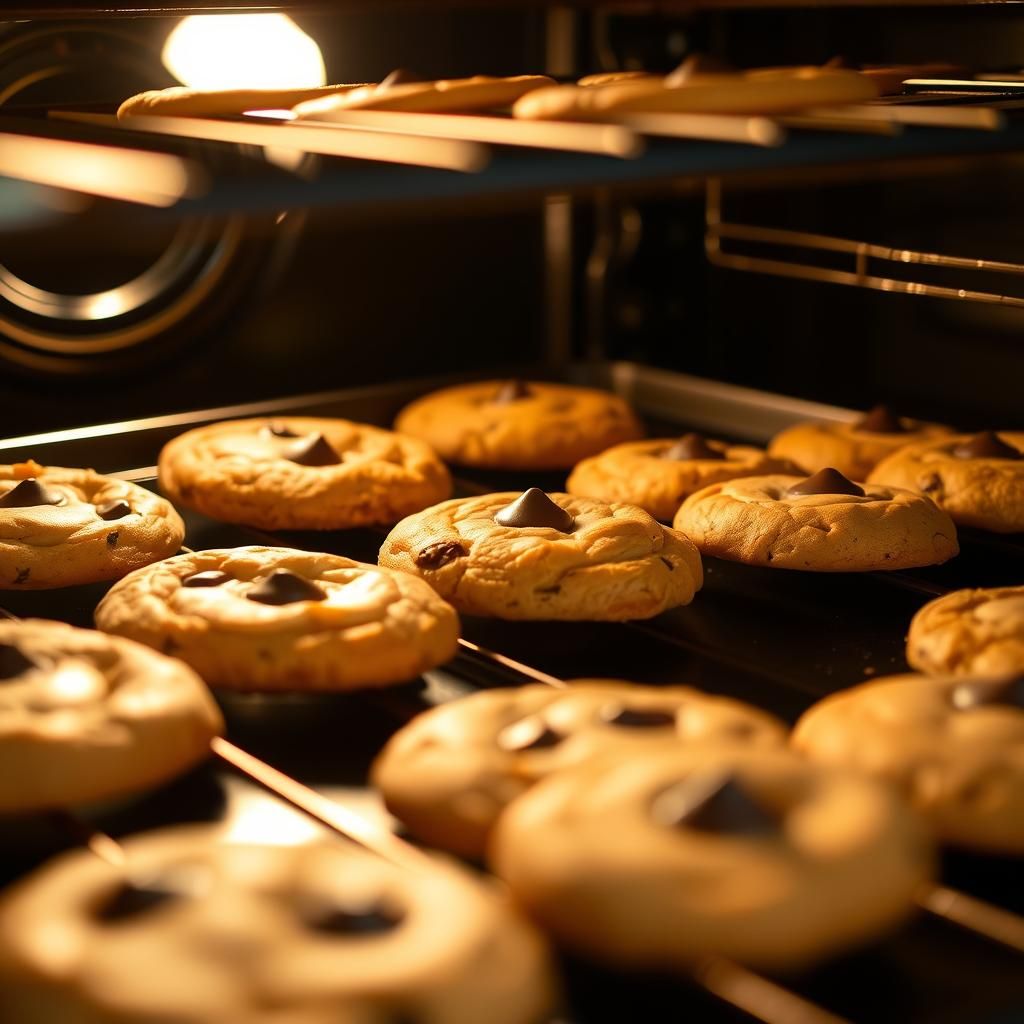
11. Cool: Remove the baking sheet from the oven. If desired for extra texture, gently press the centers of the cookies with the back of a spoon immediately after removing them. Let the cookies cool on the baking sheet for at least 10-15 minutes before attempting to move them. Keto cookies are fragile when hot and firm up as they cool.
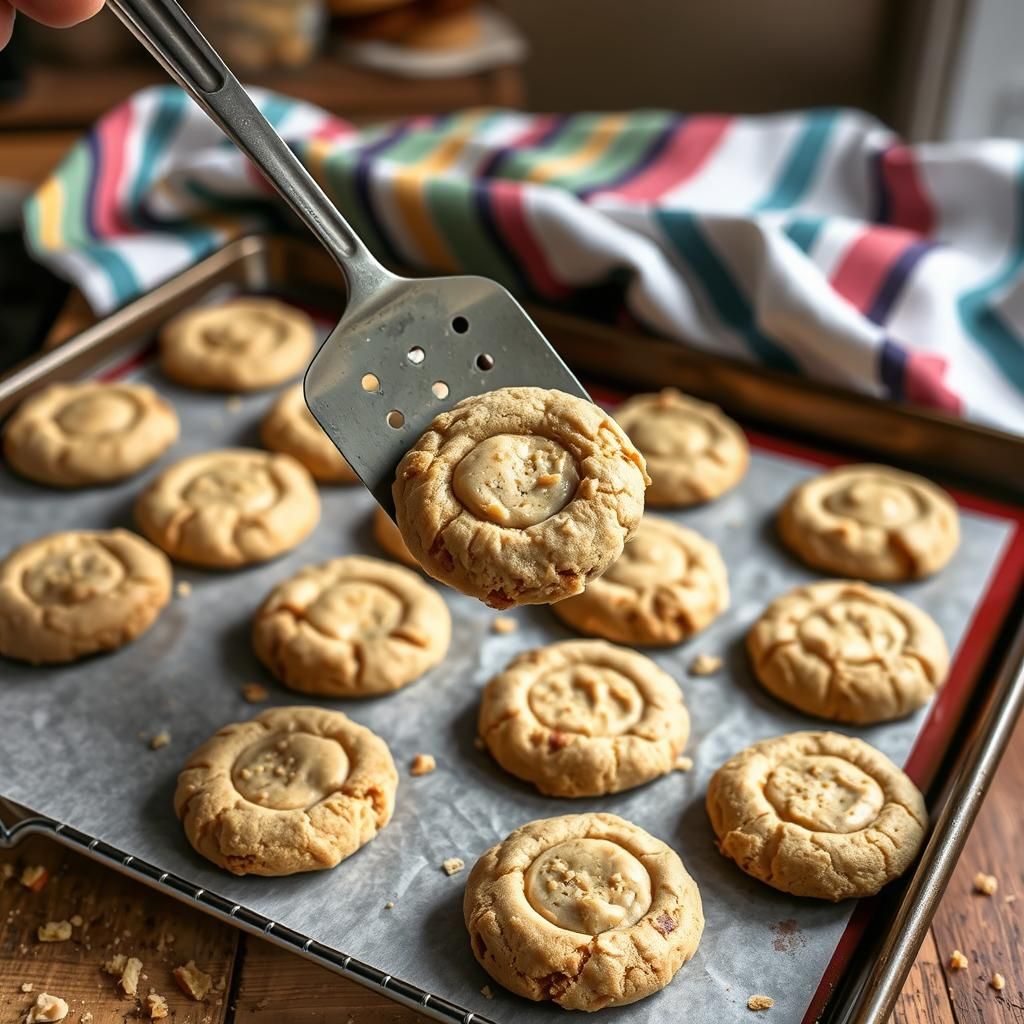
12. Transfer: Carefully transfer the cooled (but still potentially warm) cookies to a wire rack to finish cooling completely.


Pro Tips for Success:
- Use a Scale: For most accurate results, weigh your flours instead of using volume measurements. Almond flour density varies.
- Room Temperature Ingredients: Using softened butter and room temperature eggs helps them emulsify properly, leading to a better texture.
- Powder Your Sweetener: Seriously, don’t skip this if your sweetener is granular. It makes a huge difference in preventing grittiness and promoting a smooth, chewy texture.
- Chill, Chill, Chill: We can’t stress this enough. Chilling is the technique for thick cookies that don’t spread into puddles.
- Don’t Overbake: Pull the cookies when they look slightly underdone in the center. They will continue to bake on the hot pan. This is crucial for chewiness.
- Customize: Feel free to add a pinch of cinnamon, flaky sea salt on top before baking, or chopped nuts (pecans or walnuts are keto-friendly) along with the chocolate chips.
Troubleshooting Common Keto Cookie Woes
Even with a great recipe, baking can have hiccups. Here’s how to diagnose and fix common issues specifically with keto cookies aiming for that thick and chewy texture:
Flat Cookies? Here’s Why.
- Butter Was Too Soft/Melted: If your butter was greasy or melted when creaming, the cookies will spread excessively. It should be soft enough to indent easily, but still hold its shape.
- Dough Wasn’t Chilled Enough: Insufficient chilling is the #1 cause of flat keto cookies. The fat melts too quickly before the structure sets.
- Over-Creaming: While creaming incorporates air, over-creaming after adding the dry ingredients can overdevelop what little structure keto dough has, leading to collapse in the oven.
- Incorrect Ingredient Ratios: Too much sweetener, too little flour, or not enough binder (xanthan gum, egg) can cause spread. Double-check your measurements.
- Warm Baking Sheet: Placing dough on a warm baking sheet starts the melting process too soon.
- Oven Temperature Off: An oven that isn’t hot enough won’t set the edges quickly, leading to spread. Use an oven thermometer to check accuracy.
Cookies Too Dry or Crumbly?
- Overbaked: This is the most common culprit. Keto cookies go from perfectly chewy to dry hockey pucks very quickly. Pull them when they look slightly underdone.
- Too Much Flour/Not Enough Fat or Binder: Incorrect ratios can lead to a dry, crumbly texture. Weighing ingredients helps with accuracy.
- Insufficient Binder (Xanthan Gum/Egg): Without enough binder, keto flours won’t hold together properly.
- Using Coconut Flour Incorrectly: Too much coconut flour for the amount of liquid/fat will result in very dry cookies. Ensure you use the correct ratio or only use almond flour if preferred.
- Insufficient Mixing (Initially): Not creaming the butter/sweetener enough or not mixing in the eggs fully can affect the overall hydration and texture.
Cakey Texture vs. Chewy
- Too Much Leavening (Especially Baking Powder): Too much baking powder can cause cookies to puff up excessively like little cakes.
- Too Much Liquid/Egg White: An imbalance towards liquid or proportionally more egg white than yolk can lean towards a cake-like crumb.
- Overmixing Dry Ingredients: Overmixing can sometimes develop a tougher, more cake-like structure even in gluten-free doughs.
- Not Enough Fat/Brown Sugar Substitute: The fat interferes with structure development, and the moisture from brown sugar helps create chewiness. Without these, you lean cakey.
Dealing with Sweetener Aftertaste or Grittiness
- Using Granulated Erythritol: Always powder your erythritol or use a pre-powdered blend for cookies to avoid recrystallization and grittiness.
- Sweetener Type: Some people are more sensitive to the cooling effect of erythritol. Try a blend with monk fruit or switch to allulose if you can.
- Too Much Sweetener: Using excessive amounts of sweetener can intensify aftertaste. Stick to the recipe amounts.
Elevating Your Keto Cookies: Variations and Add-ins
Once you’ve mastered the basic thick and chewy recipe, feel free to experiment:
- Nuts: Add 1/2 cup of chopped pecans, walnuts, or macadamia nuts along with the chocolate chips. Toasting the nuts lightly beforehand enhances their flavor.
- Spices: Add 1/2 teaspoon of cinnamon or a pinch of nutmeg to the dry ingredients.
- Sea Salt: Sprinkle flaky sea salt over the tops of the cookie dough balls before baking for a delightful sweet and salty contrast.
- Extracts: Swap vanilla extract for almond extract, maple extract (use sparingly), or a combination.
- Different Chips/Chunks: Use sugar-free white chocolate chips, peanut butter chips (check carb count), or sugar-free caramel chunks.
- Cocoa Powder: For double chocolate cookies, replace 1/4 cup of almond flour with unsweetened cocoa powder. You might need to add a tiny bit more liquid (like a splash of almond milk) as cocoa is drying.
For even more recipe ideas, check out 500 Delicious Keto Recipes Cookbook.
If you enjoy cooking with specific appliances, the Keto Air Fryer Cookbook might be a good addition to your collection.
And for those with a sweet tooth, don’t miss the Keto Dessert Book for more low-carb treats.
Storing Your Keto Cookie Masterpieces
Proper storage helps maintain that desired chewy texture:
- Room Temperature: Once completely cooled, store cookies in an airtight container at room temperature for 3-5 days. To maintain chewiness, you can add a slice of keto-friendly bread (like a small chaffle piece or a piece of low-carb bread) to the container – the cookies will absorb moisture from it.
- Refrigerator: For longer storage, keep in an airtight container in the fridge for up to a week. They may firm up slightly but will still be chewy.
- Freezer (Baked Cookies): Place completely cooled cookies in a single layer on a baking sheet and freeze until solid. Then transfer to a freezer-safe container or zip-top bag. They last 2-3 months. Thaw at room temperature or microwave briefly for a warm, chewy treat.
- Freezer (Dough): Scoop cookie dough balls and place them on a parchment-lined baking sheet. Freeze until solid, then transfer to a freezer-safe container or bag. Label with the date. Dough balls can be baked directly from frozen; they may require an extra 2-4 minutes of baking time. This is an excellent way to always have fresh-baked keto cookies on hand!
Understanding the Macros: Why This Recipe Fits Keto
While exact macros will vary slightly based on specific ingredients used (especially the type of sweetener and chocolate chips), a well-formulated keto cookie recipe like this is designed to be low in net carbohydrates.
- Net Carbs: Calculated as Total Carbohydrates – Fiber – Sugar Alcohols (or Allulose, as most count it this way due to minimal metabolic impact).
- Almond/Coconut Flour: High in fiber, low in net carbs compared to wheat flour.
- Keto Sweeteners: Provide sweetness with minimal to no net carbs.
- Sugar-Free Chocolate Chips: Use alternative sweeteners to keep carbs low.
- Fat Content: Keto diets are high in healthy fats. The butter, egg yolk, and fat from the flours/nuts contribute significantly to the macro profile, helping you stay within your fat targets.
By controlling the ingredients, you ensure that each cookie delivers decadent flavor and texture without derailing your state of ketosis. Enjoying a delicious treat like this within your dietary framework is key to long-term adherence. For a structured start, a 30 DAY KETO MEAL PLAN can be invaluable.
The journey to the perfect Thick & Chewy Keto Chocolate Chip Cookie might involve a little more science and technique than traditional baking, but the result is undeniably rewarding. By understanding the unique properties of keto ingredients and implementing crucial steps like chilling the dough and not overbaking, you can absolutely recreate that beloved, comforting texture.
Gone are the days of settling for sad, crumbly keto imitations. With the right approach, you can pull warm, thick, gooey-centered, chewy-edged chocolate chip cookies straight from your oven, ready to satisfy that classic craving while keeping carbs in check. This recipe and the techniques discussed provide the blueprint. Now, armed with expertise and a little bit of patience (for that crucial chilling step!), you’re ready to bake your own batch of keto cookie perfection. Happy baking!
If you’re exploring different facets of the keto diet, perhaps you’d find the Keto Soup Detox program interesting.
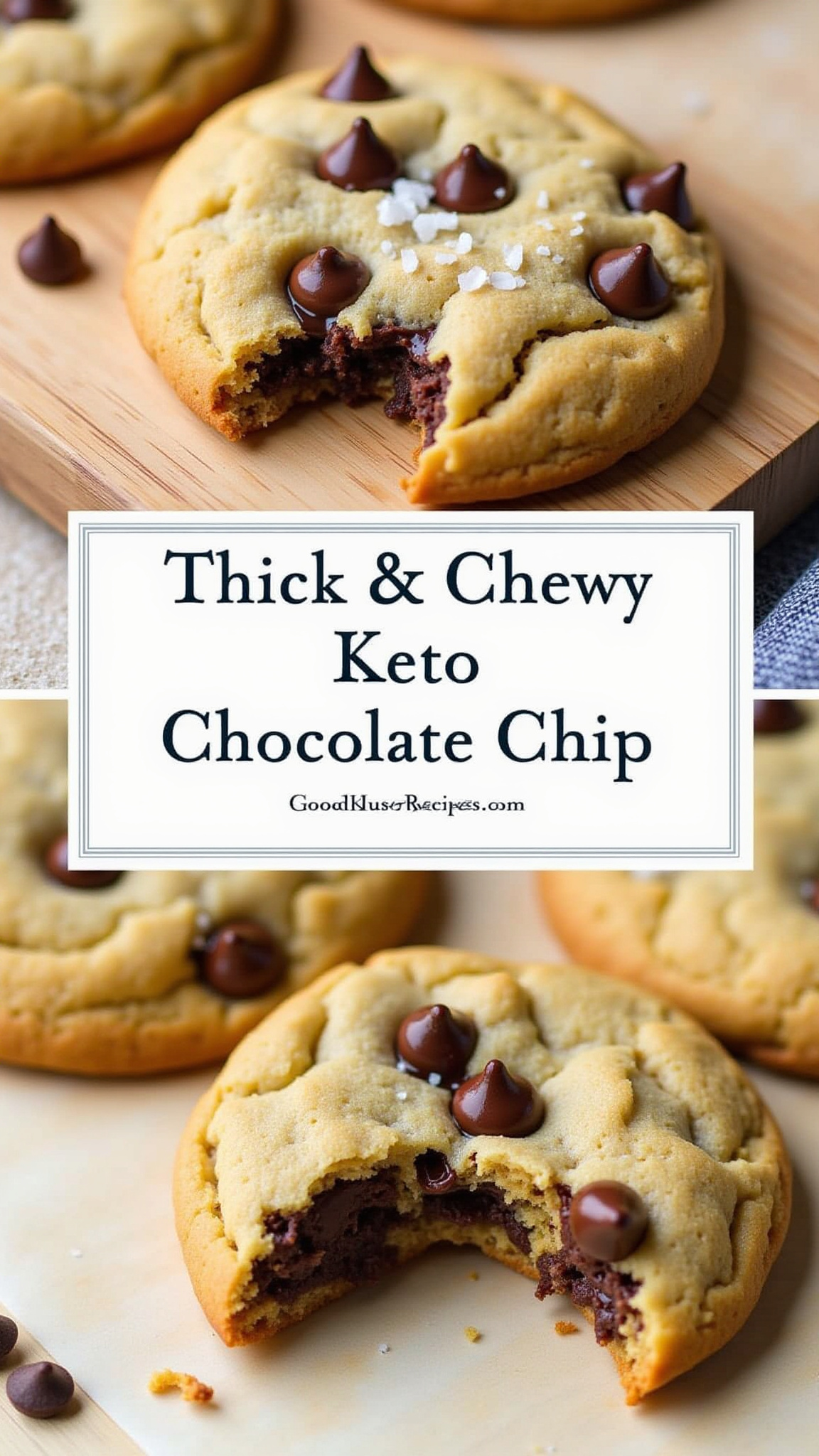
Affiliate Link Disclosure: Some of the links in this post are affiliate links. This means that if you click on the link and make a purchase, I may receive a small commission at no extra cost to you. I only recommend products or services that I personally use and believe will be valuable to my readers.
